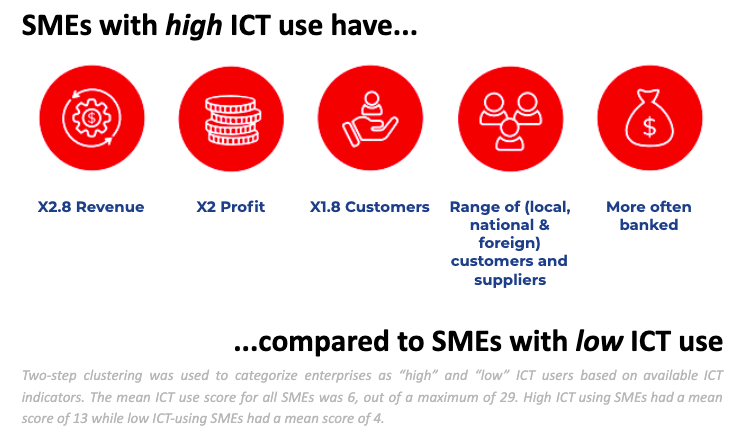Originally appeared on Colombo Telegraph, Daily News and Daily FT
By Ayesha Zainudeen
Small and medium-sized businesses (SMEs) represent over half of the businesses in Sri Lanka. They also provide an important source of employment for a large part of the labour force. They have been dubbed the ‘backbone’ of the economy in national policy frameworks. Supporting this sector and helping small businesses to grow should be an important part of the national strategy for post-COVID economic recovery.
This article is the second in a multi-part series by the Advocata Institute and LIRNEasia on what needs to be done to empower Sri Lanka’s micro, small-medium businesses for post-COVID economic recovery. In Part 1, the Advocata Institute examined the barriers faced by small businesses to formalization and what needs to be done to lower them. In this part, LIRNEasia looks at what is holding SMEs back, through the lens of digital exclusion.
Connectivity is related to better business performance
A 2019 LIRNEasia survey of SMEs across Sri Lanka showed that businesses classified as ‘high’ ICT users performed considerably better on a number of indicators such as revenues, profits, number of customers, etc. (Figure 1). Perhaps most interestingly, they were also connected to a global value chain in some way.
Figure 1: How SMEs classified as high ICT users are different to those classified as low ICT users (Source: LIRNEasia AfterAccess SME survey, 2019)

